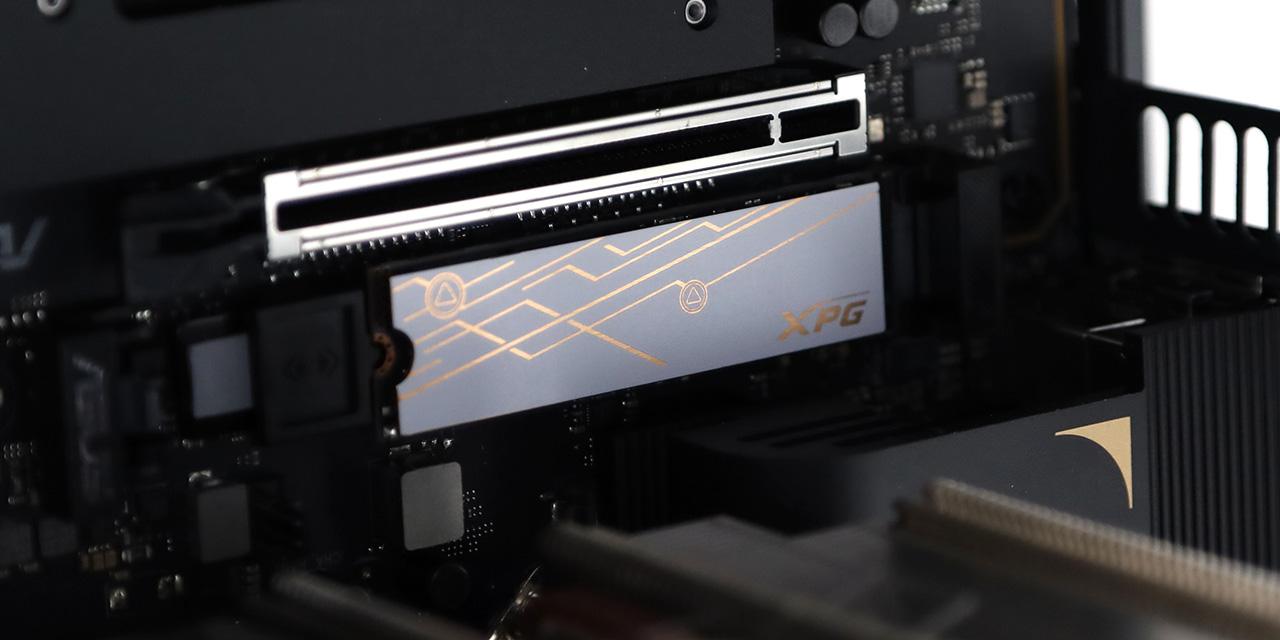Page 2 - A Closer Look, Installation, Test System
Aside from the red aluminum heatspreader and slick black printed circuit board, G.SKILL's Ripjaws-X F3-14900CL9D-8GBXL 2x4GB 2x4GB RAM -- which I'll refer to G.SKILL Ripjaws-X for short from now on -- is almost physically identical to the G.SKILL Ripjaws. This means the heatsinks carry a medium height profile, thanks to the array of 'teeth' at the top (Although the teeth arrangement is slightly different between the two, the height has not changed). Aluminum is lightweight, and serves as a decent heat conductor, while the toothed heatsink design improves air ventilation for faster heat dissipation. This is especially useful for systems equipped with side mounted CPU heatsink fans adjacent to the memory slots, so the G.SKILL Ripjaws-X headspreaders can piggy-back off its airflow. Fortunately, it has lower profile than the company's Pi series, and it actually fits nicely under giganormous heatsinks such as the Noctua NH-D14 we reviewed last year. Whether you like to call it marketing gimmick or whatnot, it is almost impossible nowadays to find performance memory without any form of a heatspreader attached, haha. They do undeniably serve a purpose in dissipating heat, but for most memory modules, unless run at a voltage significantly over designed voltages -- which you won't, special thanks to integrated memory controllers on Intel processors -- this feature is certainly not a requirement. But I will admit they look pretty cool in any windowed chassis.
The heatspreader design of the G.SKILL Ripjaws-X modules is symmetrical, which is fairly logical because memory ICs reside on both sides of the PCB. Besides functional purposes, it also improves the look. A large label is applied over the flat areas of both sides of the heatspreader; with G.SKILL's logo near the western edge, and 'Ripjaws-X' branding on the eastern edge, both printed in black. Streaks of red and black gradients can be found across the surface, as shown in our image above. Meanwhile, a specification label covers over the 'Ripjaws-X' branding on one side of each module. It lists the kit name (G.SKILL F3-14900CL9D-8GBXL), frequency, latencies, bandwidth, voltage, and the module's memory capacity. The serial number underneath the bar consists of a long string of numeric characters; the last digit is consecutive to the value listed on the other module to indicate that they come from the same box. Our particular unit is manufactured in July 2011.
As you can see more clearly in our photo above, the G.SKILL Ripjaws-X has a very nice black PCB. Meanwhile, its heatspreader on top is composed of two separate pieces, which are interlinked by the two outermost teeth at the top. The heatspreader is held to the module itself by a strip of thermally conductive adhesive, and each half part of the heatsink is aligned by a reciprocating teeth. The adhesive force between the two heatspreader and memory ICs are not particularly strong, so the user can easily take them off with bare hands without risking any damage to their memory modules.
From our above photo, it should also be clearer on how the heatspreaders are designed. Each tooth on the heatspreader is curved inwards, and meets its corresponding tooth from the other half piece at the top for a complete symmetrical design. Since the teeth are made from very thin aluminum, it does not hold a lot of heat, therefore dissipating the heat energy relatively quickly into the surrounding environment. Despite using very thin aluminum, the short and simple design makes it quite ample in resisting bending forces. In the end, if you are going to be pushing your system to the limits with high memory voltages, the heatspreaders may be beneficial to improve system stability and overclocking potential (But you probably won't, thanks to Intel as aforementioned). But other than that, if you need to remove your RAM sinks to install your CPU heatsink, then the G.SKILL Ripjaws-X F3-14900CL9D-8GBXL 2x4GB will have no problems operating normally either.
A closer look at the memory chips on the G.SKILL Ripjaws-X F3-14900CL9D-8GBXL 2x4GB dual channel memory kit. The photo above should be quite clear -- it says "H5TQ2G83BFR" on each IC. These are identical chips found on the Ripjaws-X F3-17000CL9D-8GBXLD, except I would assume the ones on the DDR3-2133 kit are binned higher. These are Hynix manufactured chips, with eight 256MB chips on each side for a total of 4GB on each DIMM. As mentioned on the previous page, these RAM modules run at a frequency of DDR3-1866 with 9-10-9-28 latencies at 2T command rate. They operate at a stock voltage of 1.5V, which is a bit lower than the Core i3/i5/i7 maximum safe limit of 1.65V.
Our test configuration as follows:
CPU: Intel Core i3-2120
CPU Cooling: Thermaltake Frio (Noctua NF-P12)
Motherboard: ASUS P8P67 PRO
Graphics: Gigabyte Radeon HD 6870 1GB SOC
Chassis: Lian Li PC-Z60 (Noctua NF-S12B FLX)
Storage OCZ Vertex 2 160GB 25nm; Western Digital Scorpio Blue 320GB
Power: FSP AURUM CM Gold 650W
Sound: Auzentech X-Fi Bravura
Optical Drive: LiteOn iHAS224-06 24X DVD Writer
Operating System: Microsoft Windows 7 Professional SP1 x64
Compared Hardware:
- G.SKILL Ripjaws-X F3-14900CL9D-8GBXL 2x4GB @ DDR3-1866 9-10-9-28
- G.SKILL Ripjaws F3-12800CL7D-8GBRH 2x4GB @ DDR3-1600 7-8-7-24
- G.SKILL Ripjaws-X F3-17000CL9D-8GBXLD 2x4GB @ DDR3-2133 9-11-9-28
- G.SKILL Sniper F3-12800CL9D-8GBSR2 2x4GB @ DDR3-1600 9-9-9-24
- Kingston HyperX KHX1600C9D3X2K2/8GX 2x4GB @ DDR3-1600 9-9-9-27
- Patriot Viper Xtreme Division 2 PC3-15000 2x4GB @ DDR3-1866 9-11-9-27
Page Index
1. Introduction, Packaging, Specifications
2. A Closer Look, Installation, Test System
3. Benchmark: AIDA64 CPU
4. Benchmark: AIDA64 FPU
5. Benchmark: AIDA64 Memory
6. Benchmark: PCMark 7
7. Benchmark: 3DMark 11
8. Benchmark: PassMark PerformanceTest 7.0
9. Benchmark: SuperPI 1M, Cinebench R11.5
10. Overclocking and Conclusion





